Steeping Tea
TIPS FOR STEEPING ABSOLUTELY DELICIOUS TEA
Are you ready for extraordinary flavor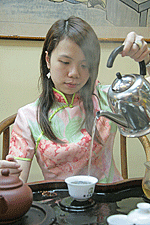 ?
?
Tea comes in a variety of leaf sizes, shapes and six classifications: black, green, oolong, heicha (‘dark tea’, including Pu-erh), white, and yellow. How to proceed when steeping a new tea can be puzzling, but with our guidelines you will be able to steep delicious tea – easily – every time. Each tea that we sell on our website has a detail page with specific steeping instructions for that tea.
Our tea-steeping instructions are based on the guidance we have been given by the artisans who make our teas and the Tea Masters we have visited during our tea sourcing trips to Asia
Our methods are theirs, and the variations we suggest come at their encouragement. Tea preparation is both collaborative and evolutionary – there is no right or wrong – just recommendations based on the collective wisdom of seasoned tea drinkers over time. Our guidelines will help you understand how to proceed when steeping a new tea or how to tweak your technique to improve the taste of your favorite tea.
GENERAL TEA STEEPING INFORMATION
STEEPING INFORMATION BY TYPE OF TEA
ASIAN-STYLE STEEPING & WESTERN-STYLE STEEPING
GENERAL TEA STEEPING INFORMATION:
A Great Tasting Cup of Tea is the Result of Many Factors
Seasoned tea drinkers understand that steeping a great cup of tea is not something that ‘ just happens’ – it is the result of knowing how to proceed with the type of tea you will be steeping and paying attention to the essentials of careful tea preparation.
1. Each type of tea will taste best when steeped in a certain way.
For example, green tea does not like to be steeped in the same manner as black tea; and white tea methods are different again. Understanding these differences is the first step in encouraging delicious results from your various teas.
2. Steep each Tea Trekker tea according to our recommended steeping method.
Our whole-leaf teas are selected by us from fresh seasonal batches of premium quality leaf, and from the two highest grades of that tea available each season. Because we know how different our teas are from teas sold elsewhere with the ‘same’ name, and how much fresher our teas are, we ask that you steep our teas using our tea steeping recommendations, in order to enjoy the best flavor. Once you are familiar with the flavor attributes of a particular season’s leaf, feel free to make personal adjustments to suit individual taste.
3. Use enough leaf
A delicious cup of tea begins with using enough leaf. Using less leaf than our recommended amount will give you a weak-tasting cup.
4. Be mindful of the temperature of the water that you are using.
Different teas have optimal temperature requirements and will not yield their best flavor when the water is too hot (or too cool).
5. Longer steeping time does not yield tastier tea
Each tea and each steeping method has a preferred steeping time. Some teas respond well to only a specific time in the water – other teas have more flexibility for longer (or shorter) steep times.
6. Re-steeping tea
Asian-style tea steeping is the practice of steeping certain teas multiple times in a small teapot or tea vessel. Western-style steeping uses a larger teapot and the tea gives up most of its flavor in one steeping ( with some reasonable exceptions). The differences in taste, body and overall depth of flavor that is shown by tea stepped by these two steeping methods is significant – try both ways and see which you prefer, or hopefully you will enjoy them both. (see the section below for more info on these two popular methods)
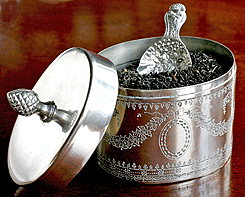
When you purchase loose-leaf tea you will notice that the appearance and the volume of the tea leaves differs from tea to tea. Some teas are light and bulky, while other teas are heavy and dense. For light and bulky teas you will need to use more leaf (by volume) than you will with heavy and dense teas. Our recommended measurements of tea take the density and bulky-ness of each tea into account. For true, consistent accuracy, a small scale is invaluable, so that we can all measure by weight.
In general for Western-style tea-steeping we recommend this proportion of leaf to water:
2 to 3 grams of leaf for every 6-ounces of water in your teapot or tea-steeping vessel.
This measure will vary in volume depending on the size and heft of the tea leaf. A 2 to 3 gram measure can be any of the following:
1 teaspoon
2 teaspoons
1, 2 or 3 Tablespoons
If you wish to experiment with enjoying many different teas, an easy and inexpensive method for accurately measuring leaf tea is to use an inexpensive electronic kitchen gram scale. These cost approximately $16.00-$35.00 and will take the guesswork right out of measuring your tea.
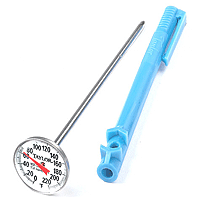
For every type of tea there is a preferred water temperature that will coax the best flavor from the tea leaves. Water that has cooled from the boil for a minute or two will extract different nuances of flavor and aroma from certain teas than water that is either hotter or cooler in temperature. Cooler water diminishes astringency; hotter water encourages it.
After water is brought to a boil, it will drop approximately 10°F every minute it stands off the heat in a covered kettle.
Here are our suggested water temperatures for the major types of tea:
Pu-erh & other Heicha:
200°F – 210°F
That’s water that is just at the boil
Black Tea:
195°F – 205°F
That’s water that is just under a full boil
Oolong Tea ( strip-style):
195°F – 205°F
That’s water that is just under a full boil
Oolong Tea ( semiball rolled-style):
180°F – 190°F
That’s water that has cooled slightly
‘Main Harvest’ China Green Tea & China Jasmine Tea:
175°F – 185°F
That’s water that has cooled a bit more
China Spring Green Tea & Japan Ichibancha Spring Tea:
170°F- 180°F
That’s water that is cooler yet
China Yellow & White Tea:
160°F – 170°F
That’s the coolest water of all
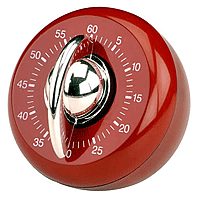
Tea that is either under-steeped or over-steeped will likely be disappointing. Each type of tea has a preferred steeping time that brings out the best taste in the tea.
The eventual addition of milk and/or sugar will make a difference as to how a tea is steeped. Adding milk or sugar will cut the astringency of a longer steep time, so it may be appropriate to steep certain black teas for the longer 5 minutes if milk will be added. The same tea drunk plain will likely be tastier if steeped for 3 minutes.
Also, bear in mind the place of origin of the tea that you are steeping. All tea is manufactured for a particular assumed or historic audience of tea drinkers, so the characteristics of a certain tea will be better suited for an addition of milk or not, depending on the expected market.
How to tell?
Chinese, Japanese, Korean and Taiwanese teas, of all classifications, are historically assumed to be drunk plain, with nothing added. African, Ceylon and Indian teas (with a few exceptions) are primarily made for a Western export market and are manufactured to accommodate (or encourage) the addition of milk and/or sugar.
STEEPING INFORMATION BY TYPE OF TEA:
ASIAN-STYLE STEEPING & WESTERN-STYLE STEEPING:
For teas that can be steeped either Asian-style or Western-style such as oolong and Pu-erh, we provide information that will familiarize you with the differences between these different cultural tea-steeping methods. And we will explain how to use the tea vessels that are important in Asian tea cultures to steep these teas, so that you will obtain the best flavor when using this method.
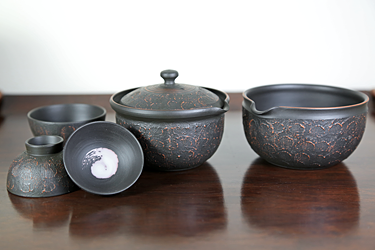
Asian-style steeping
- uses a small teapot (10 ounces or less) or a gaiwan (3-6 ounces)
- uses a small quantity of water and a large quantity of tea
- time in the water for the tea is very short – steep times are 30 seconds to 1 minute
- tea is re-steeped multiple times to reveal a different facet of flavor each time. Flavor will be rich in dimension and very full-bodied due to the ratio of tea to water
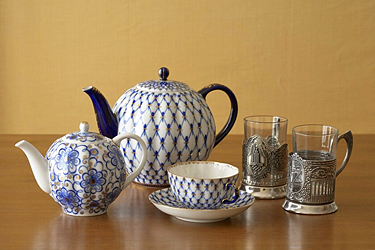
Western-style steeping
- uses an ‘English-style’ teapot (18-32 ounces)
- uses a large quantity of water and a small quantity of tea
- time in the water for the tea is long – steep times of 2-5 minutes depending on the tea
- a few teas can be re-steeped successfully, but the taste will be thin and light due to the large amount of water and long steeping time used in this method
More Tea 101 Tutorials:
What is Tea? Selecting Tea Storing Tea Healthful Benefits

